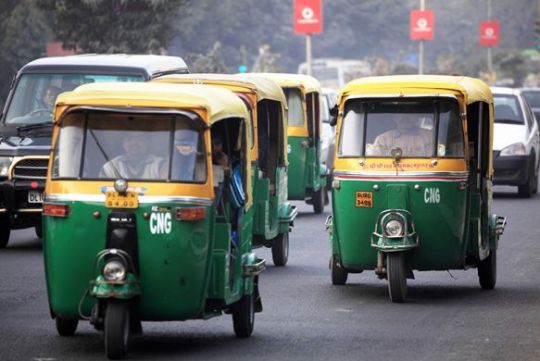At Long Last, India Starts Measures To Curb Air Pollution

The issue is most grave in the nation's capital, New Delhi, which was found to be the most polluted city in the world by a World Health Organization (WHO) survey last year. The survey found an annual average of 153 micrograms of PM2.5 (harmful particulate matter) in the city's air. As observed by The Guardian, this is "six times the WHO's recommended minimum, 12 times US standards and more than twice the level considered safe by Indian authorities." Such high levels are not just limited to the capital, as 13 Indian cities were featured in the survey's twenty dirtiest cities.
The high presence of PM2.5 has been linked with causing respiratory diseases. In 2012, the WHO concluded that India also has the highest rates of death from respiratory disease, with 159 deaths per 100,000 people.
Most vulnerable to the high levels of pollutants in the air are children. A study done by the Chittaranjan National Cancer Institute (CNCI) found that children in Delhi are more likely to develop respiratory diseases than those living anywhere else.
In a recent interview with The Guardian, Environment Minister Prakash Javadekar expressed a greater resolve to tackle the nation's air pollution woes. "Clean air is a birth right. We are giving high priority to this. It has not been handled correctly over the last 10 years," he said.
On Monday, Prime Minister Modi launched the nation's first air quality index in 10 cities, including Delhi. The index monitors air pollution levels in real time. As per Javadekar, the air quality index "may prove to be a major impetus to improving air quality in urban areas, as it will improve public awareness in cities to take steps for air pollution mitigation."
The National Green Tribunal (NGT), on Tuesday, banned diesel vehicles that are over 10 years old in the National Capital Region. Formed in 2010 to deal with environmental cases, the NGT found diesel to be the chief contributor to air pollution in Delhi and surrounding areas. They also ordered the Delhi government and authorities to take more stringent measures to monitor the weight, age and pollution levels of vehicles entering the region.
Although the government is now displaying more commitment towards combating air pollution, many environmentalists and researchers are not happy with the pace of action being taken.“Given the scale of air pollution and the impact it has on the public in Delhi and many other cities across the country, we had expected the government to address the issue with more rigor and responsibility,” said Greenpeace in a statement.
Shirin Bithal, a Research Associate at the Centre for Science and Environment (CSE), responded that although she is "happy about the fact that measures are being taken, the acknowledgement has come late." According to her, these are important "first steps" that will lead to greater awareness and information about the issue, but more drastic measures are warranted, as air pollution in Delhi has "crossed all borders."
"We need to come up with an action plan to improve air quality," she argued. The CSE has long been conducting research and pushing the government to take action on air pollution.
Among her suggestions were imposing more restrictions on vehicles, closely regulating air pollution in factories, and a total ban on diesel vehicles.
Reach Staff Reporter Adi Radia here. Follow him on Twitter here.



